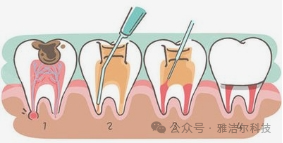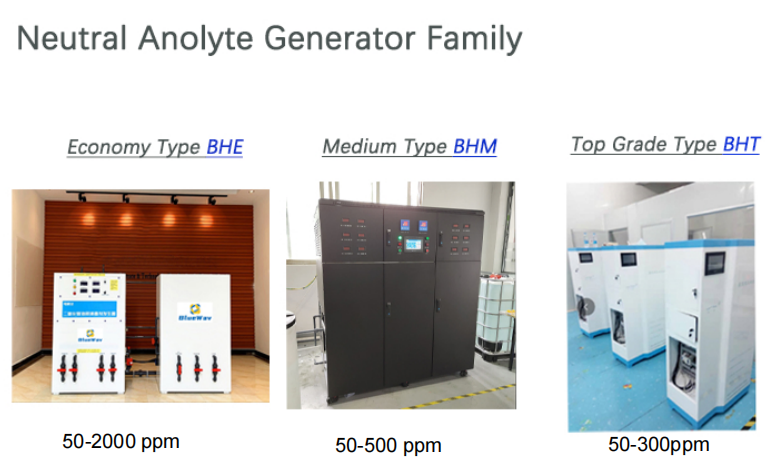Root Canal Therapy (RCT) is a common treatment method used in dentistry to treat pulp or periapical infection and save affected teeth. Its core purpose is to eliminate inflammation, relieve pain, and preserve the function of teeth by removing infected pulp tissue, disinfecting the root canal system, and filling the root canal tightly.
Root Canal Therapy

Purpose of root canal treatment
- Clear infection: remove diseased or necrotic pulp tissue, bacteria and their metabolites.
- Prevent the spread of infection: block the spread of infection to the periapical tissue or adjacent teeth.
- Preserve the affected teeth: avoid tooth extraction and maintain the chewing function and beauty of the teeth.
- Relieve symptoms: solve the problems of severe pain and swelling caused by pulpitis or periapical periodontitis.
Indications
- Pulp lesions: irreversible pulpitis (such as spontaneous pain, pain caused by hot or cold stimulation), pulp necrosis.
- Apical periodontitis: periapical abscess, granuloma or cyst.
- Traumatic or cracked teeth: pulp exposure or damage.
- Repair needs: teeth with severe caries or requiring post-core crown restoration need root canal treatment first.
Microacidic electrolyzed water

Slightly acidic electrolyzed water disinfectant (SAEW) is a highly effective and safe disinfectant developed by Chlory and put into clinical use. Its bactericidal effect is 80-100 times that of 84 disinfectant. Its high redox potential and low pH can destroy the microenvironment that pathogenic microorganisms rely on in 30 seconds or less, causing the bacteria to lose the conditions for survival and proliferation and die. At the same time, the low-concentration hypochlorous acid molecules in the slightly acidic electrolyzed water (SAEW) disinfectant can enter the microbial cells, affect the function of the cell metabolic enzymes, and cause the microorganisms to swell and rupture and die, thereby quickly killing the microorganisms. Specific clinical experiments have shown that acidic electrolyzed water disinfectants have the advantages of broad-spectrum sterilization, convenience, low cost, non-toxicity when taken orally, non-toxicity when entering the eyes, non-toxicity when inhaled, non-teratogenicity and non-carcinogenicity, etc. It is very effective for hand hygiene and is suitable for disinfection of public places such as hospitals, schools, the military, airports, hotels, railway stations, enterprises and institutions.
Advantages of slightly acidic electrolyzed water
- Strong antibacterial
Broad-spectrum bactericidal (bacteria, fungi, biofilm), especially for drug-resistant Enterococcus faecalis.
Rapidly penetrate the microbial cell wall and take effect within 30 seconds.
- Safe and low irritation
Extremely low toxicity to periapical tissues and living pulp cells, less postoperative pain.
Decomposed into water, no chemical residue, suitable for allergic patients and children's permanent teeth treatment.
- Protect dentin
The slightly acidic environment reduces dentin collagen damage, and long-term use does not affect the mechanical properties of teeth.
- Easy to operate
Ready-to-use solution, no need to prepare; can be combined with EDTA, ultrasound or laser to enhance the effect.
- Economic and environmentally friendly
Low cost, no polluting waste, in line with the trend of green medical care.
Scope of application and usage
Scope of application
Root canal flushing
Main function: replace or assist traditional flushing solutions (such as NaOCl, saline) to remove bacteria and biofilm in the root canal.
Applicable stages:
Initial diagnosis: cooperate with sodium hypochlorite to decompose organic residues.
Revisit: used for root canal disinfection (especially for stubborn infections such as Enterococcus faecalis).
Inter-clinic disinfection
Rinse before root canal sealing, or as an auxiliary disinfectant for temporary sealing drugs (such as calcium hydroxide).
Complex infection cases
Pretreatment flushing of refractory apical periodontitis and foreign bodies in the root canal (such as separation instruments).
Pediatric dentistry
Suitable for vital pulp preservation treatment of young permanent teeth (such as partial pulpotomy), low irritation.
Usage method
General process of root canal irrigation
- Steps: a. After mechanical preparation: rinse with slightly acidic electrolyzed water first. b. Combined application: alternate with 17% EDTA (slightly acidic electrolyzed water sterilizes, EDTA removes the smear layer). c. Final rinse: After rinsing with slightly acidic electrolyzed water, normal saline or distilled water terminates the reaction.
- Parameter recommendation:
- Rinsing time: 30–60 seconds each time, repeated 2–3 times.
Synergistic scheme with other drugs
- Slightly acidic electrolyzed water + sodium hypochlorite:
- First use 2.5% NaOCl to dissolve organic tissue, and then use slightly acidic electrolyzed water to enhance sterilization.
- Slightly acidic electrolyzed water + ultrasonic washing:
- Ultrasound activates slightly acidic electrolyzed water to improve the efficiency of biofilm removal.
In-office disinfection application
Wet cotton balls dipped in slightly acidic electrolyzed water are placed at the root canal orifice, temporarily seal zinc oxide, and revisit after 3–7 days.
Contact:
+8615786688998
